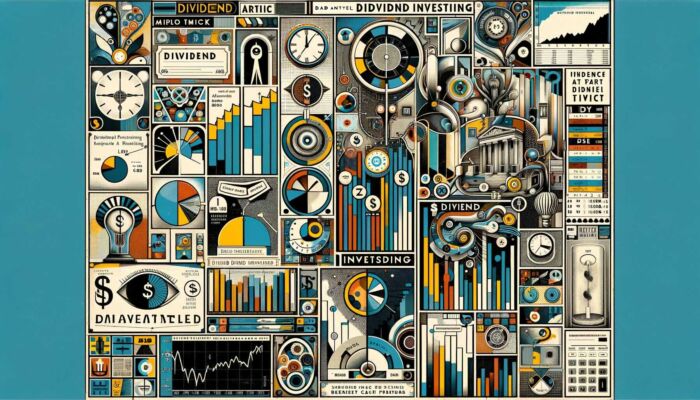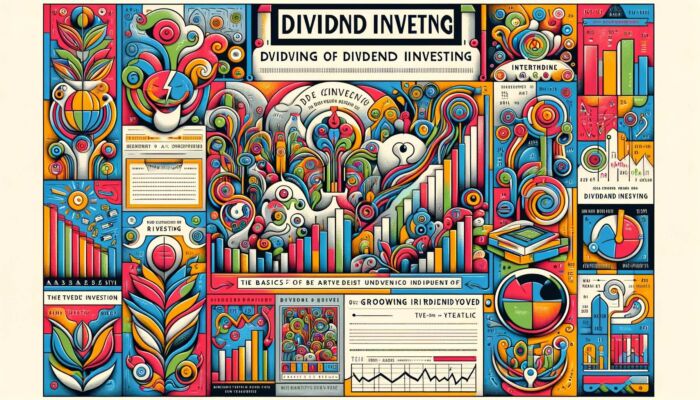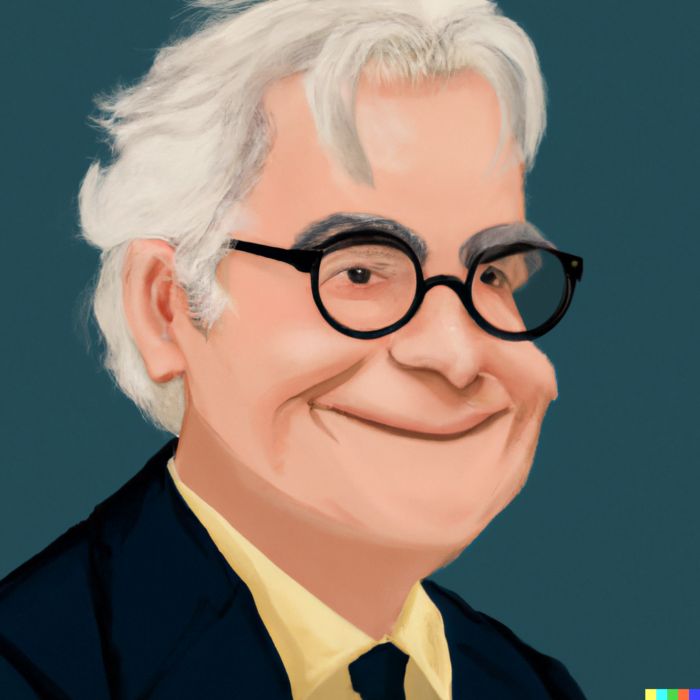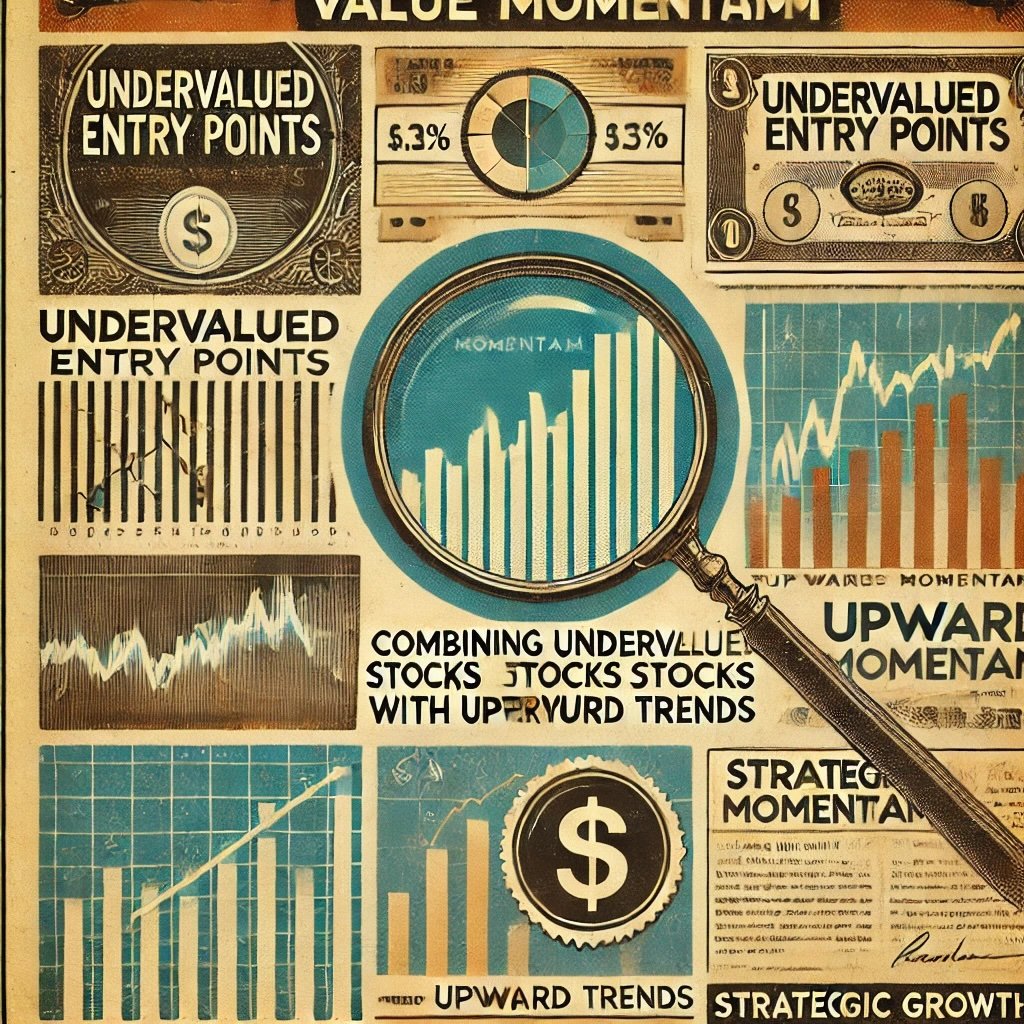In the arena of investing, there are few names as venerable as that of Warren Buffett. Often known as the “Oracle of Omaha,” this nonagenarian billionaire embodies a sage-like persona that pairs perfectly with his investing acumen. With a keen eye for value and a long-term investing horizon, Buffett has shaped Berkshire Hathaway into a powerhouse that encompasses a broad swath of American industry. His approach to investing, characterized by patience, discipline, and deep business understanding, has turned him into a living legend, whose words of wisdom are eagerly sought by investors worldwide.

Warren Buffet’s Philosophy on Dividend Investing
Warren Buffett’s philosophy on dividend investing is a delectable blend of simplicity, sophistication, and sheer common sense. Buffett’s fondness for dividends stems from his love for companies that churn out cash and generously share their profits with shareholders. For him, dividend investing isn’t about chasing the highest yield; instead, it’s about identifying outstanding businesses that are likely to continue paying and growing dividends well into the future. The Oracle is less interested in the fruit that falls this season and more in the health and productivity of the tree over a lifetime.

Importance of Discussing Buffett’s Approach to Dividend Investing
Discussing Warren Buffett’s approach to dividend investing is akin to exploring a treasure map of financial wisdom. Given Buffett’s unparalleled success and longevity in the investing world, his strategies offer valuable insights for investors of all stripes, whether they’re beginners just stepping onto the investment path or seasoned pros seeking fresh perspectives.
Dividend investing, with its promise of steady income and potential for capital appreciation, has a timeless allure. Combining it with Buffett’s principles gives it an extra layer of reliability and a sense of assurance that comes from following a well-trodden, successful path. So, let’s delve into this riveting journey, exploring the landscape of Buffett’s dividend investing approach, and uncovering nuggets of wisdom that could illuminate our own financial path.

Understanding Warren Buffett’s Investment Philosophy
To understand the symphony that is Warren Buffett’s investing philosophy, we must first understand the melody of value investing. Conceived by the revered duo Benjamin Graham and David Dodd, value investing is the idea of purchasing stocks for less than their intrinsic value. It’s like finding a Picasso at a yard sale; you recognize its worth when others don’t.
Buffett, a proud disciple of Graham, has been a lifelong champion of this approach. He seeks companies that are fundamentally strong but undervalued by the market, often due to temporary setbacks or market inefficiencies. His investing journey is akin to a safari, where he patiently stalks his prey (value stocks), waits for the opportune moment (market underpricing), and then pounces with all his might (invests heavily).
Importance of “Circle of Competence”
Warren Buffett often emphasizes the “circle of competence,” urging investors to stick to what they know best. It’s about recognizing your intellectual territory and not straying into unfamiliar terrain. As Buffett says, “It’s not about how big the circle is, but knowing its boundaries.”
If investing is a game of chess, your circle of competence is your side of the board. You don’t have to play every piece in the market; you only need to play the ones you understand well. Whether it’s technology, healthcare, or consumer goods, find your niche, master it, and let your investments prosper within that circle. For Buffett, his circle has often included companies with robust business models and consistent cash flows, many of which happen to be great dividend payers.

Concept of “Intrinsic Value” and “Margin of Safety”
Intrinsic Value” and “Margin of Safety” are the two pillars that support the edifice of Buffett’s investment philosophy. Intrinsic value refers to the actual worth of a company, taking into account tangible and intangible factors, from its assets and earnings to its brand value and competitive position. It’s like the heart and soul of a company, stripped of the market’s often fickle sentiments.
The margin of safety, on the other hand, is the discount at which the stock is available compared to its intrinsic value. It’s the protective moat around your investment castle, buffering you from uncertainties and potential errors in your intrinsic value calculation.
For Buffett, dividends are a tangible representation of a company’s intrinsic value and its ability to generate cash. A steady or growing dividend often suggests a company with a strong intrinsic value. Moreover, a generous dividend yield can also provide a margin of safety, offering regular returns while waiting for the market price to align with the intrinsic value.
In the grand tapestry of investing, Buffett’s philosophy of value investing, his circle of competence, and his principles of intrinsic value and margin of safety weave a pattern that stands out. It’s a pattern that emphasizes patience, discipline, and a deep understanding of businesses – a pattern that has often led him to the doors of dividend-paying companies.
source: The Long-Term Investor on YouTube

Warren Buffett’s Approach to Dividend Investing
In the grand buffet of stocks, Warren Buffett is like a gourmet who savors quality. And when it comes to dividends, his preferences are no different. He gravitates towards companies that have not only maintained a consistent dividend payout but have also demonstrated a propensity to grow their dividends over time.
For Buffett, these are the stocks that pass the taste test of a reliable business model, sustainable competitive advantage, and a commitment to returning profits to shareholders. They are the financial equivalent of comfort food — providing nourishment during lean times and enhancing gains during market feasts.
This approach has seen him invest in companies like Coca-Cola and Procter & Gamble, which have long histories of dividend stability and growth. Through thick and thin, these dividend aristocrats have been sending checks to their investors, reinforcing Buffett’s conviction in their enduring value.
source: WealthMagnet on YouTube
Emphasis on Quality over Quantity in Dividend Investing
When it comes to dividend investing, Buffett doesn’t get swayed by the seductive allure of high yields. He is not the kind to chase after stocks offering sky-high dividends, only to watch the underlying company falter and the dividends disappear. Instead, Buffett is the epitome of the mantra ‘quality over quantity.’
His focus remains firmly on the health of the underlying business and its ability to sustain and grow dividends. A moderate dividend yield from a robust, thriving company is far more appealing to him than a high yield from a shaky, unstable one.
For Buffett, it’s about ensuring the goose that lays the golden eggs (dividends) is well-fed and well-cared for, rather than focusing solely on the size of the eggs.
The Role of Retained Earnings in His Investment Strategy
Warren Buffett has a deep appreciation for the power of retained earnings in the context of dividend investing. Retained earnings are the part of net income that a company chooses to reinvest in the business rather than pay out as dividends. Buffett sees this reinvestment as a crucial indicator of a company’s health and its potential for future dividend growth.
For him, a company that intelligently reinvests its earnings is like a diligent gardener, constantly planting the seeds for future prosperity. These reinvestments can drive growth, improve competitive positioning, and ultimately lead to increased profits and larger dividends in the future.
Thus, while Buffett values dividends, he also respects companies that strike a balance between paying dividends and reinvesting in growth. It’s like a healthy diet — too much of anything can be harmful, but the right mix can lead to sustained vitality.
In the world of dividend investing, Buffett’s approach is like a beacon, guiding investors towards disciplined, long-term success. It’s a symphony that harmonizes the rhythm of stable and growing dividends with the melody of quality businesses, all underscored by the bassline of sensible reinvestment. It’s a composition that’s music to the ears of any aspiring dividend investor.

Case Studies of Warren Buffett’s Dividend Investments
Coca-Cola: An example of stable and growing dividends
Pour yourself a glass of Buffett’s investment wisdom, and it’s impossible not to taste the distinct flavor of Coca-Cola. Buffett’s love for the fizzy beverage giant is no secret. For him, Coca-Cola represents a cocktail of his favorite ingredients – a rock-solid brand, a product loved worldwide, and a resilient business model. Topped with a cherry of consistently growing dividends, it’s the perfect serve.
Buffett first bought shares in Coca-Cola in 1988, and it’s remained a staple of Berkshire Hathaway’s portfolio ever since. Over the years, Coca-Cola has quenched Buffett’s thirst for dividends, increasing its payouts for over half a century and earning itself the coveted title of ‘dividend king’. Buffett’s investment in Coca-Cola is a toast to the power of stable and growing dividends and a testament to his long-term, patient investing style.
Apple: The tech exception and its significant dividend contribution
Apple and Warren Buffett – it’s a partnership that raised many eyebrows. After all, Buffett was famous for avoiding tech stocks, confessing to not understanding their business models. So, when Berkshire Hathaway bought a stake in Apple in 2016, it made headlines. But as it turns out, Buffett saw in Apple what he cherishes most – a strong brand, a loyal customer base, and a business model that gushes cash.
Moreover, Apple has sweetened the deal with a growing stream of dividends and an aggressive share buyback program. Despite not being a traditional dividend stock, Apple’s payouts have grown consistently, and its vast share buybacks effectively boost the value of Berkshire’s stake. The investment in Apple is an interesting chapter in Buffett’s dividend investing story, illustrating how he is willing to bend his own rules when the right opportunity comes knocking.
American Express: A lesson in long-term dividend investing
The tale of Warren Buffett and American Express is a thrilling saga that dates back to the 1960s. It’s a story of crisis, trust, and ultimately, triumph. When a scandal plunged American Express into crisis in 1963, Buffett saw past the short-term turmoil to the company’s long-term value and solid business model. He invested heavily, and as history has shown, his faith was handsomely rewarded.
Fast forward to today, and American Express is not just a testament to Buffett’s value investing genius but also a shining beacon in his dividend investment portfolio. The company has consistently paid dividends and demonstrated commendable growth over the years. Buffett’s investment in American Express underscores his unwavering belief in the power of long-term dividend investing.
Through these case studies, we see how the stage of Buffett’s investment theatre has been graced by different characters – a beverage giant, a tech superstar, and a financial services veteran. Each of these companies play their roles to perfection, harmonizing their strengths with a consistent and growing dividend track record, creating a performance that has delivered standing ovations in the form of robust returns for Berkshire Hathaway.

Lessons from Buffett’s Dividend Investing Strategy
If there’s a mantra that reverberates through the halls of Warren Buffett’s investment kingdom, it’s this: “Invest in what you understand.” This is not just a catchy phrase; it’s the foundation upon which Buffett’s empire has been built. Understanding the business means knowing its ins and outs – from how it makes money to how it navigates competitive landscapes.
In the context of dividend investing, understanding the business can help you gauge the sustainability of the dividends. Is the dividend supported by consistent cash flow? Is the business resilient to economic downturns? Will it survive the onslaught of competition and continue to share its profits with shareholders?
For Buffett, answering these questions is not just an exercise in due diligence; it’s an essential part of his investment DNA. He believes that understanding the business is the first line of defense against investment blunders.

The Value of Patience in Dividend Investing
Patience is more than a virtue in Warren Buffett’s investing playbook; it’s a strategic weapon. Buffet often says, “The stock market is a device for transferring money from the impatient to the patient,” and his investment history is a testament to this philosophy.
Buffett’s approach to dividend investing showcases patience in its most splendid form. He buys stocks with an intention to hold them “forever,” patiently allowing compounding to work its magic. Dividends, in his view, are the faithful companions of patient investors. They keep showering investors with cash, regardless of the market’s mood swings.
From Coca-Cola to American Express, Buffett’s investments underscore his patience. He waited for the right price to enter, held on through market downturns, and reaped the rewards of growing dividends. In Buffett’s world, patience isn’t just about waiting; it’s about waiting wisely.
Evaluating Management’s Approach to Capital Allocation
Warren Buffett’s approach to evaluating a company extends beyond its balance sheet and income statement. He attaches significant importance to the company’s management, particularly their approach to capital allocation.
Management’s decisions about when to reinvest in the business, when to pay dividends, and when to buy back stock can have a profound impact on shareholder value. Buffett respects managements that strike a balance between investing for growth and returning cash to shareholders. He appreciates companies that pay consistent dividends without compromising their financial health or growth potential.
In the chessboard of investing, Buffett sees dividends as an essential move in the game of capital allocation. He appreciates management teams who know when to move their pawn (reinvest), when to guard their queen (maintain cash reserves), and when to reward their players (shareholders) with dividends.
The lessons from Buffett’s dividend investing strategy are profound and enduring. They encourage investors to delve deeper into understanding businesses, to embrace patience, and to respect the art of capital allocation. Like a lighthouse guiding ships through stormy seas, these lessons can help steer investors safely along their dividend investing journey.

Risks and Limitations of Warren Buffett’s Approach
The Oracle of Omaha, Warren Buffett, has always stressed the importance of strong company management. He firmly believes that an effective, honest, and dedicated management team can be the rudder that steers a company towards success. However, this reliance also poses a risk. If the management of a company in which Buffett invests falters, or if their decision-making becomes questionable, it could negatively impact the value of the investment, and subsequently, the dividend payout.
Moreover, even the best management teams can sometimes fail to navigate turbulent market conditions or sudden industry disruptions. These uncertainties form an inherent risk in Buffett’s approach, reminding us that even the sage of investing must contend with forces outside his control.

Potential for Missed Opportunities in High Growth, Low Dividend Sectors
Buffett’s penchant for companies that pay stable and growing dividends often leads him towards mature, established companies. However, this focus also means that he may miss out on opportunities in high-growth sectors that often pay little to no dividends, such as technology and biotech startups.
While his investment in Apple marks a notable exception, the broader tech sector has been a less charted territory for Buffett. While this cautious approach protects him from the volatility often associated with high-growth, low-dividend sectors, it can also mean missing out on significant growth opportunities. Buffett’s style serves as a reminder that every investing strategy, no matter how successful, can have its blind spots.

Limited Applicability for Short-term or Income-focused Investors
Warren Buffett is a marathon runner in the world of investing; he’s in it for the long haul. His approach to dividend investing prioritizes long-term capital appreciation over short-term gains or income generation. While this works perfectly for him, it might not align with the objectives of all investors.
For instance, short-term traders who seek to profit from market fluctuations might find Buffett’s buy-and-hold approach too slow. Similarly, income-focused investors, such as retirees who depend on dividends for their living expenses, might prefer higher-yielding investments instead of waiting for a company’s dividends to grow over the long term.
Buffett’s approach, much like a well-crafted bourbon, is tailored to a specific palette. It’s a timeless classic for those who appreciate its underlying tones of patience, understanding, and long-term value, but it may not suit those seeking a quick, intoxicating rush or a steady, immediate flow.
The brilliance of Buffett’s dividend investing strategy, like any other, comes with its set of risks and limitations. Recognizing these can help investors better understand the strategy and apply its principles in a way that aligns with their individual investing style and goals. After all, investing, in Buffett’s own words, is simple but not easy, and appreciating the nuances is a part of the journey.
source: The Average Joe Investor on YouTube
How to Apply Buffett’s Dividend Investing Principles
Warren Buffett’s dividend investing strategy is akin to searching for diamonds in a coal mine. His trained eye for value and his knack for sniffing out durable businesses has led him to some of the most rewarding investments in history. Here are some tips, borrowed from Buffett’s playbook, to help you identify strong dividend companies:
Firstly, look for companies with a consistent record of paying dividends. Like clockwork, these companies reward their shareholders year in, year out, rain or shine. This consistency is often a sign of a strong, resilient business.
Secondly, focus on companies with a sustainable competitive advantage or ‘moat’. In Buffett’s words, “The key to investing is not assessing how much an industry is going to affect society, or how much it will grow, but rather determining the competitive advantage of any given company and, above all, the durability of that advantage.”
Thirdly, understand the company’s business model. You should be able to explain how the company makes money in simple terms. If you can’t, you’re probably in over your head. Buffett insists on investing in companies that operate within his ‘circle of competence.

Importance of Maintaining a Diversified Portfolio
Even though Buffett has been known to go against the conventional wisdom of diversification — he famously said, “Diversification is protection against ignorance. It makes little sense if you know what you are doing.” — it is important to remember that this advice comes from an investment wizard with unparalleled knowledge and expertise.
For the average investor, maintaining a diversified portfolio can help spread the risk and potentially increase the chances of investment success. Diversification in the context of dividend investing could mean investing in dividend-paying companies across different sectors, of various sizes, and even from different countries. This way, even if one sector faces a downturn, your entire portfolio won’t be adversely affected.
The Value of Long-term Investment Horizons
Lastly, one of the cornerstone principles of Buffett’s investing strategy is his long-term horizon. Buffett isn’t in the game for quick bucks; he plays the long game. And it’s in this extended timeframe that dividends can truly work their compounding magic.
By reinvesting dividends, investors can purchase more shares, which in turn generate more dividends, leading to a compounding effect that can significantly increase the value of the investment over the long term. Buffett’s long-term approach to dividend investing is akin to planting an acorn, watering it patiently, and watching it grow into a mighty oak.
In the garden of investing, Buffett’s principles guide you to sow the seeds of understanding, nurture them with patience, and reap the fruits of dividends. But remember, even while following these principles, it’s crucial to adapt them to your unique financial circumstances and goals. As Buffett’s story teaches us, investing isn’t a one-size-fits-all endeavor, but a journey that requires a personal touch at every step.
source: Dividend Data on YouTube
Conclusion: Warren Buffett’s Dividend Investing Approach

As we roll down the shutters on our exploration of Warren Buffett’s approach to dividend investing, let’s recap the key tenets of his strategy that we’ve unearthed. It’s as if we’ve walked through the treasure trove of Buffett’s wisdom and emerged clutching a handful of precious gems.
First, Buffett’s approach hinges on understanding the business. This doesn’t just mean knowing what a company does but diving into the depths to comprehend how it makes money and how it’s positioned to continue doing so in the future.
Next, patience isn’t just a virtue in Buffett’s world; it’s a cardinal rule. From waiting for the right price to enter a stock to allowing the company’s dividends to compound over the years, patience permeates every aspect of Buffett’s strategy.
Then we have the emphasis on strong company management. Buffett places a premium on a company’s leadership, valuing their decisions on capital allocation, particularly when it comes to paying dividends.
However, just as a map is not the territory, this understanding of Buffett’s approach to dividend investing is not the strategy itself. These are guiding principles, not hard-and-fast rules, and they come with their limitations and risks.
As we part ways at the end of this tour, remember that dividend investing, like any investment strategy, calls for personal due diligence. In the echo of Buffett’s own words, “Risk comes from not knowing what you’re doing.” So, equip yourself with knowledge, sharpen your understanding, and temper it all with a good measure of patience.
Emulating Warren Buffett’s approach to dividend investing isn’t about copying his every move. Instead, it’s about adopting the principles that guide his decisions and tailoring them to fit your unique investment style and objectives. And who knows? Perhaps in following the path illuminated by the Oracle of Omaha, you’ll find your way to your own investing enlightenment.
With this, I encourage you to explore further, investigate deeper, and approach investing with a curious, yet cautious mind. For, as the grand master of investing himself puts it, “The best investment you can make, is an investment in yourself… The more you learn, the more you’ll earn.” Happy investing!
Important Information
Comprehensive Investment Disclaimer:
All content provided on this website (including but not limited to portfolio ideas, fund analyses, investment strategies, commentary on market conditions, and discussions regarding leverage) is strictly for educational, informational, and illustrative purposes only. The information does not constitute financial, investment, tax, accounting, or legal advice. Opinions, strategies, and ideas presented herein represent personal perspectives, are based on independent research and publicly available information, and do not necessarily reflect the views or official positions of any third-party organizations, institutions, or affiliates.
Investing in financial markets inherently carries substantial risks, including but not limited to market volatility, economic uncertainties, geopolitical developments, and liquidity risks. You must be fully aware that there is always the potential for partial or total loss of your principal investment. Additionally, the use of leverage or leveraged financial products significantly increases risk exposure by amplifying both potential gains and potential losses, and thus is not appropriate or advisable for all investors. Using leverage may result in losing more than your initial invested capital, incurring margin calls, experiencing substantial interest costs, or suffering severe financial distress.
Past performance indicators, including historical data, backtesting results, and hypothetical scenarios, should never be viewed as guarantees or reliable predictions of future performance. Any examples provided are purely hypothetical and intended only for illustration purposes. Performance benchmarks, such as market indexes mentioned on this site, are theoretical and are not directly investable. While diligent efforts are made to provide accurate and current information, “Picture Perfect Portfolios” does not warrant, represent, or guarantee the accuracy, completeness, or timeliness of any information provided. Errors, inaccuracies, or outdated information may exist.
Users of this website are strongly encouraged to independently verify all information, conduct comprehensive research and due diligence, and engage with qualified financial, investment, tax, or legal professionals before making any investment or financial decisions. The responsibility for making informed investment decisions rests entirely with the individual. “Picture Perfect Portfolios” explicitly disclaims all liability for any direct, indirect, incidental, special, consequential, or other losses or damages incurred, financial or otherwise, arising out of reliance upon, or use of, any content or information presented on this website.
By accessing, reading, and utilizing the content on this website, you expressly acknowledge, understand, accept, and agree to abide by these terms and conditions. Please consult the full and detailed disclaimer available elsewhere on this website for further clarification and additional important disclosures. Read the complete disclaimer here.





